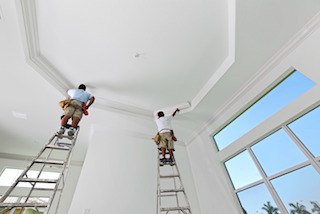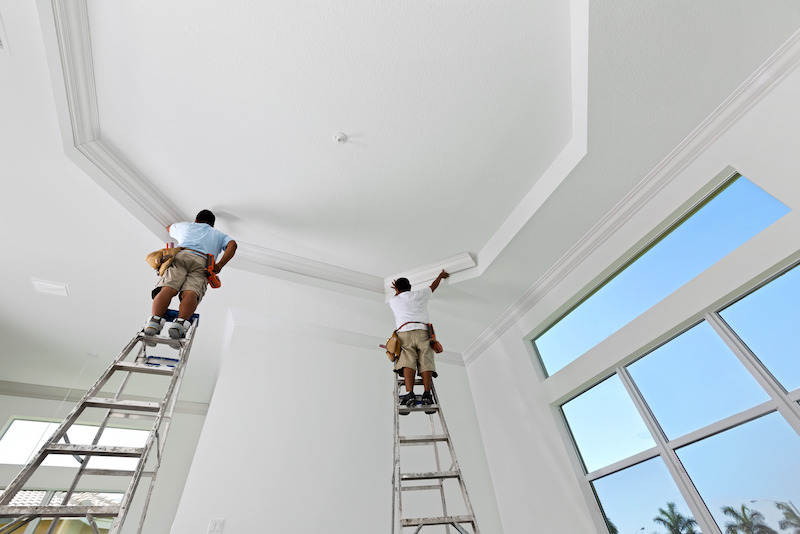
When installing or updating the interior décor of your place, one thing may cross your mind: should I bother with crown molding or not? Really, what is all the fuss about? It certainly is a popular design feature and for good reason.
This is largely because installing suitable crown molding is among the most impactful, adaptable, and cost-friendly approaches.
If you’re considering setting up crown molding in your house, your decision will definitely hinge on this major question:
What is the Purpose of Crown Molding?
The purpose of crown molding is to provide a decorative feature to the space where the walls and ceiling meet. Not only that, crown molding presents a host of perks to the interior décor and feel of a house.
It hides structural and visual imperfections, enhances the interior visual allure of a room, highlights various design elements such as wall paint and furniture, and increases the overall resale value of a house. Ultimately, it’s one of the most practical strategies to upgrade a house’s appearance, functionality, and overall value.
Crown Molding Conceals Flaws in the Structural and Interior Décor of a Home

Newly constructed houses can still have a few structural and paint inconsistencies where the walls mate with the ceiling. Similarly, corners where the walls and ceilings of older buildings touch develop telltale blemishes and cracks as they expand and shift over time. Installing crown molding around the house’s perimeter covers these imperfections and gives the interior décor an instant upgrade.
Crown Molding Can Transforms a Lackluster House Interior into a Breathtaking and Alluring Home for You and Your Guests
If you’re thinking that your place may look a bit bland (or worse, the ceiling is haphazard) the installation of crown molding can certainly give it a boost. This is because crown molding can augment the visual appeal of your house’s interior quite substantially.
It’s appeal is timeless and gives elegance to an otherwise unremarkable ceiling.
However, as crown molding comes in diverse designated designs (both stock and custom), ensure you choose the right style to compliment your interior décor for a more cohesive appearance.
Crown molding Frames a Room with Elegance
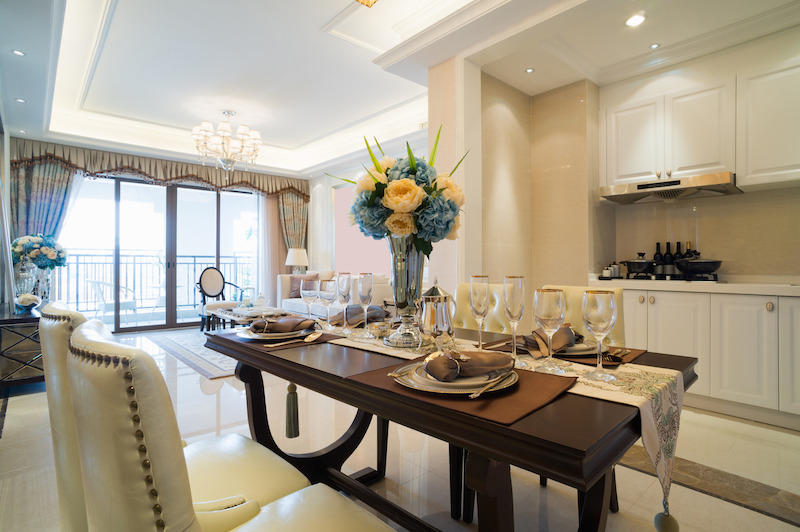
Although bold wall paint and wallpapers make a house interior stand out, crown modeling can do the job better.
The interior décor, paint, and house furniture resemble a painting or photograph while the crown molding is akin to a stylish picture frame that highlights the elegance of all design elements within with a chic finished look.
Plus those ‘in the know’ who are after a certain look, are likely to pay more money for a house with crown molding, than one without it.
Increases the Resale Value of a House
Crown molding not only gives your home a stylish finish, but also gives it an overall luxuriant, upscale appearance. Some buyers expect it. Consequently, the addition of crown molding may increase the property value, as your home is more attractive to prospective buyers.
When to Use Crown Molding?
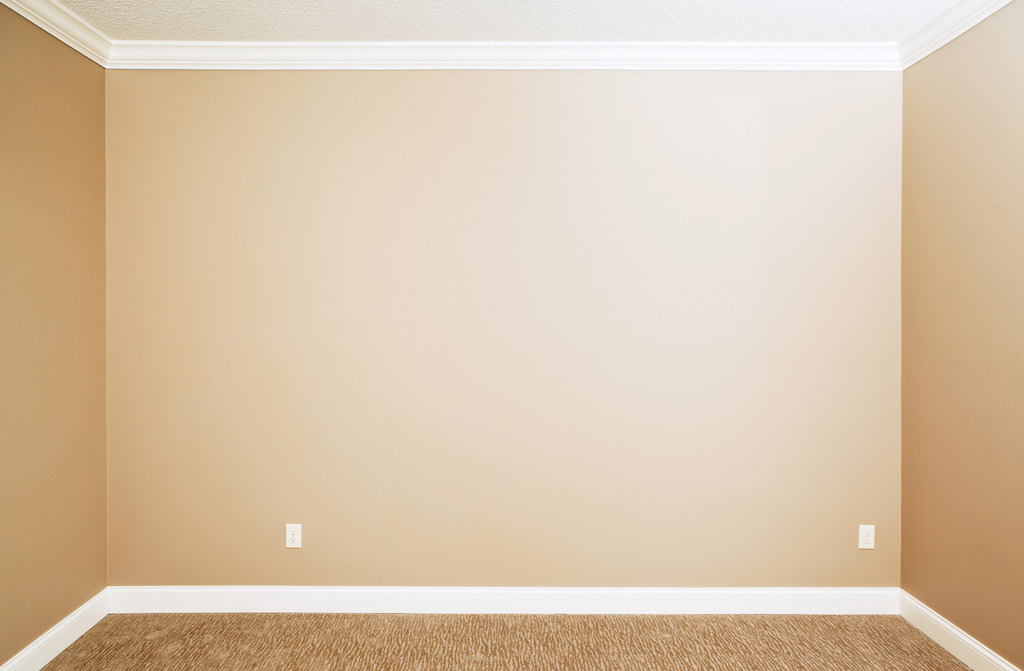
You should use crown molding when you’re after a decorative cap that covers diminutive structural and visuals flaws.
Plus you should should also use crown molding when you’re wanting a fluid transition from the walls to the ceiling.
Really, you should base the decision to install or forego crown molding on your style of house along with your taste preferences. Thus, there are a few instances installing crown molding can be advantageous to the overall visual appeal and value of a house:
- When upgrading the interior décor of a house, crown molding conceals cracks and blemishes at the adjoining corners between walls and ceiling
- Crown molding adds a touch of elegance to a home, further accentuating its interior décor
Nevertheless, there are some instances you may want to forego crown molding. For instance, if you own a contemporary house and would like to go with a flat, sleek interior look, consider other architectural design structures.
Moreover, you may want to avoid crown molding entirely to avoid visual distraction from an already established architectural attribute such as beam and plank ceilings.
Is Crown Molding Necessary?
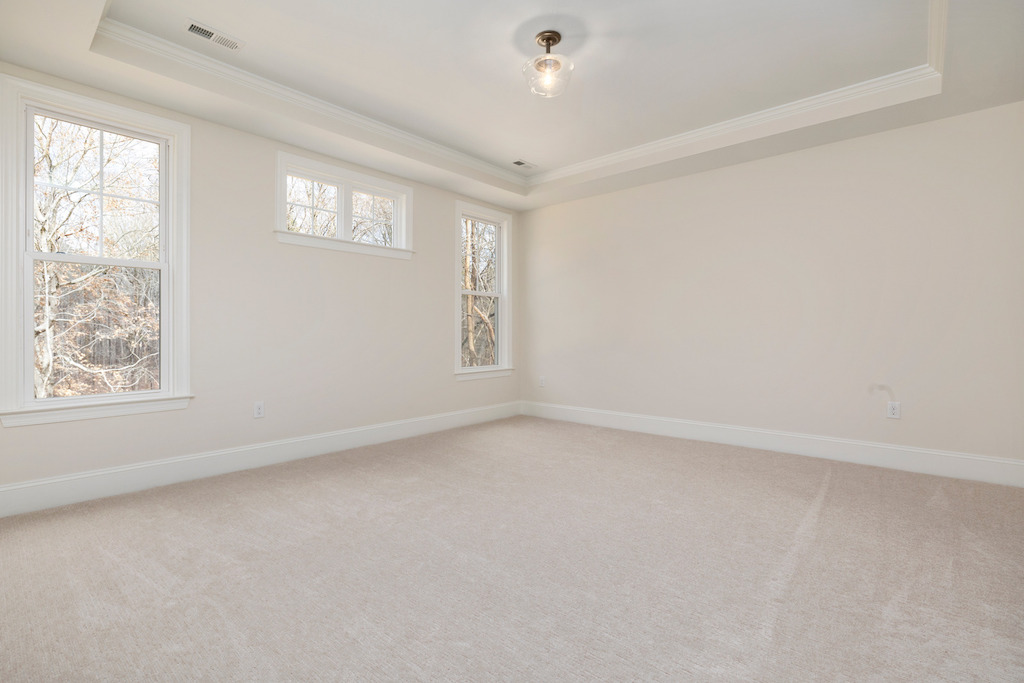
Some interior décor specialists would argue it is necessary. Those who deem it ‘necessary,’ claim that installing crown molding upgrades plain and bland rooms to elegant masterpieces.
Others endorse it because it’s a cheap and ‘no-brainer’approach to increase houses’ resale value. Some will go as far to advise homeowners to install crown molding in all rooms, while others only advocate for crown molding in rooms that receive the most visitation.
Simply put, installing crown molding is not an all-or-nothing decision. You can adopt it in some rooms and forego it in others. The most desirable places to install crown molding include the living room and attached areas of open-concept homes including the sitting room, hallway, and kitchen.
Additionally, it’s worth noting that others would argue it is not necessary. Houses sell all the time without it. It really depends on if you like the look of it or not.
Many do and there’s no doubt it’s popular. In my opinion, it is better to have some type of crown molding (even if it’s not that fancy) than no crown molding at all.
I think crown molding is served best in a home’s entryway, master bedroom, high-roofed bathrooms, and powder rooms. Whereas I wouldn’t bother with it if I had cathedrals and or high vaulted ceilings. It just does fit as beautifully in these rooms.
Should Crown Molding Match the Walls or Ceilings?
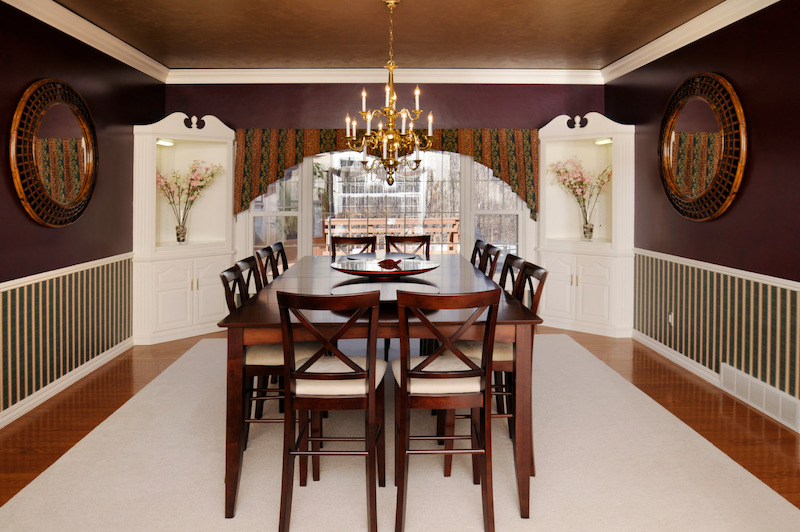
Most of the time, crown molding is painted in the same colour as the ceiling. Flat white is the most common. I’ve rarely seen a different colour crown molding to the ceiling.
Of course the choice is up to you.
You can install crown molding of the same color as the walls or ceilings, and other trims for a fluid, consistent appearance. Alternatively, it can be of contrasting but complementary color shades as an architectural statement. Still, the decision ultimately depends on the style of your house and personal preferences.
As an architectural embellishment, crown molding is designed to attract some attention, albeit not being the chief house attraction. Thus, here are a few pointers to select the right crown molding color:
- Painting the entire room from ceiling to crown molding, walls, and baseboards in the same color makes the furniture and other interior decorations stand out
- Painting the walls the same color as your crown molding dulls the visual effect of the latter
- Matching the crown molding color to that of the walls makes a low ceiling appear higher and the room seem larger
- Installing crown molding with the same color as the ceiling draws eyes upwards and is a very popular choice.
Ultimately, the color of crown molding you choose in relation to that of your home’s ceiling, walls, and other trims is entirely at your discretion. Interior décor specialists can suggest optimal colors but your personal preferences hit the final nail.
Should Crown Molding Be the Same Throughout the House?
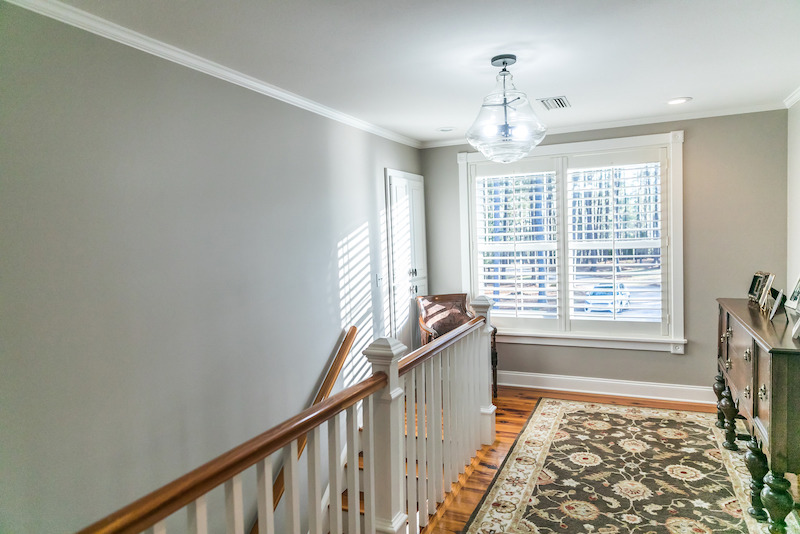
Simply put, crown molding doesn’t have to be the same and uniform throughout the house. Nevertheless, if your house has proportionally similar rooms and hallways along with a uniform ceiling height throughout, installing the same crown molding can give the interior space great flow and consistency.
I personally keep it consistent as visually, I think it looks better.
Overall,, it’s better to vary the size of the crown moldings proportionally with the scale of varying ceiling heights. So if you’re ceiling heights vary (for whatever reason), adjust the crown molding accordingly.
Also keep in mind that crown molding requires a distinct starting and stopping point. Ideally, it should go around a room in both directions before converging. Thus, the molding should be different in houses with differing ceiling heights.
In case you’d like to use crown molding with different profiles, ensure you settle for options with similar heights and style so the overall profile shape appears the same in all rooms.
Alternatively, choosing the same profile for all rooms but in different sizes will enable you to maintain style consistency while still installing the correct size of crown molding for varying ceiling heights.
Either way, ensuring you restrict your choice of crown molding to an established order gives the entire interior space a discernible pattern and visual allure that even a casual observer can discern.
Final Thoughts……
Crown molding is one of the most effective and cost-friendly architectural interior décor approaches that is still as popular as ever. Many homeowners and interior décor experts have been applying this home improvement strategy for years.
Although considered a dark horse in home improvement by some in the industry, crown molding presents numerous perks. It enhances a home’s visual appeal, covers up appalling flaws like cracks, frames a room like a photograph, and elevates the resale value of a house.
